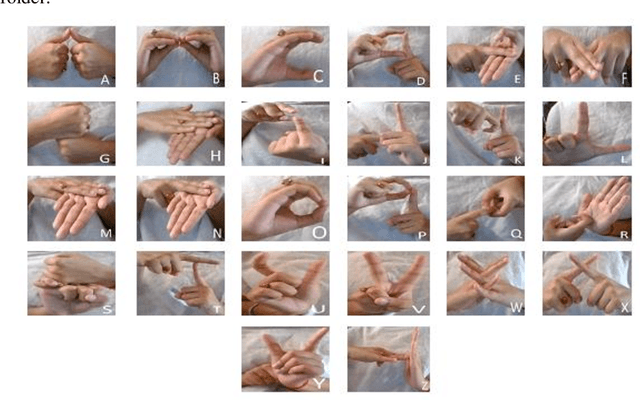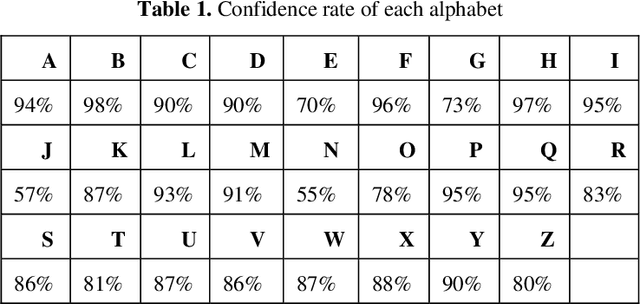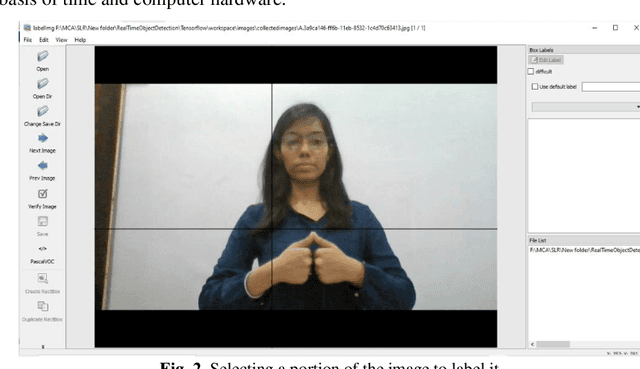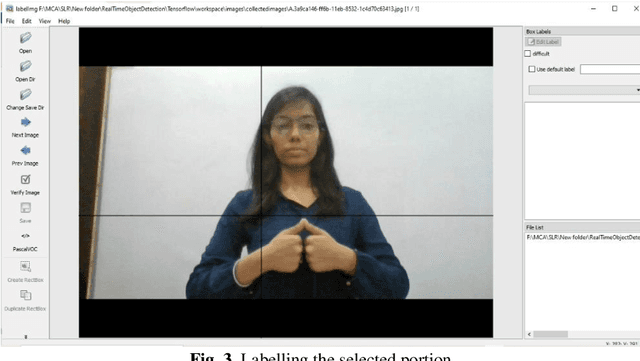Sharvani Srivastava
Continuous Sign Language Recognition System using Deep Learning with MediaPipe Holistic
Nov 07, 2024Abstract:Sign languages are the language of hearing-impaired people who use visuals like the hand, facial, and body movements for communication. There are different signs and gestures representing alphabets, words, and phrases. Nowadays approximately 300 sign languages are being practiced worldwide such as American Sign Language (ASL), Chinese Sign Language (CSL), Indian Sign Language (ISL), and many more. Sign languages are dependent on the vocal language of a place. Unlike vocal or spoken languages, there are no helping words in sign language like is, am, are, was, were, will, be, etc. As only a limited population is well-versed in sign language, this lack of familiarity of sign language hinders hearing-impaired people from communicating freely and easily with everyone. This issue can be addressed by a sign language recognition (SLR) system which has the capability to translate the sign language into vocal language. In this paper, a continuous SLR system is proposed using a deep learning model employing Long Short-Term Memory (LSTM), trained and tested on an ISL primary dataset. This dataset is created using MediaPipe Holistic pipeline for tracking face, hand, and body movements and collecting landmarks. The system recognizes the signs and gestures in real-time with 88.23% accuracy.
* 14 pages, 4 figures, Wireless Pers Commun
Sign Language Recognition System using TensorFlow Object Detection API
Jan 05, 2022



Abstract:Communication is defined as the act of sharing or exchanging information, ideas or feelings. To establish communication between two people, both of them are required to have knowledge and understanding of a common language. But in the case of deaf and dumb people, the means of communication are different. Deaf is the inability to hear and dumb is the inability to speak. They communicate using sign language among themselves and with normal people but normal people do not take seriously the importance of sign language. Not everyone possesses the knowledge and understanding of sign language which makes communication difficult between a normal person and a deaf and dumb person. To overcome this barrier, one can build a model based on machine learning. A model can be trained to recognize different gestures of sign language and translate them into English. This will help a lot of people in communicating and conversing with deaf and dumb people. The existing Indian Sing Language Recognition systems are designed using machine learning algorithms with single and double-handed gestures but they are not real-time. In this paper, we propose a method to create an Indian Sign Language dataset using a webcam and then using transfer learning, train a TensorFlow model to create a real-time Sign Language Recognition system. The system achieves a good level of accuracy even with a limited size dataset.
 Add to Chrome
Add to Chrome Add to Firefox
Add to Firefox Add to Edge
Add to Edge